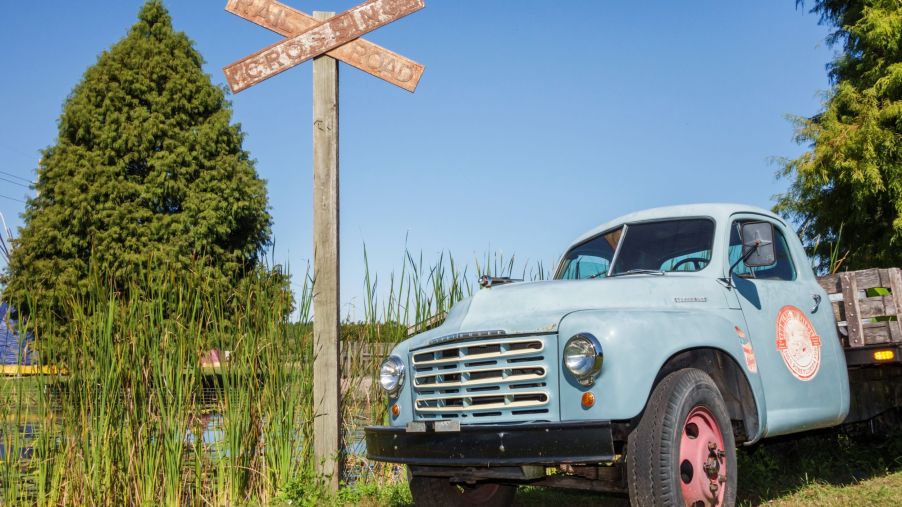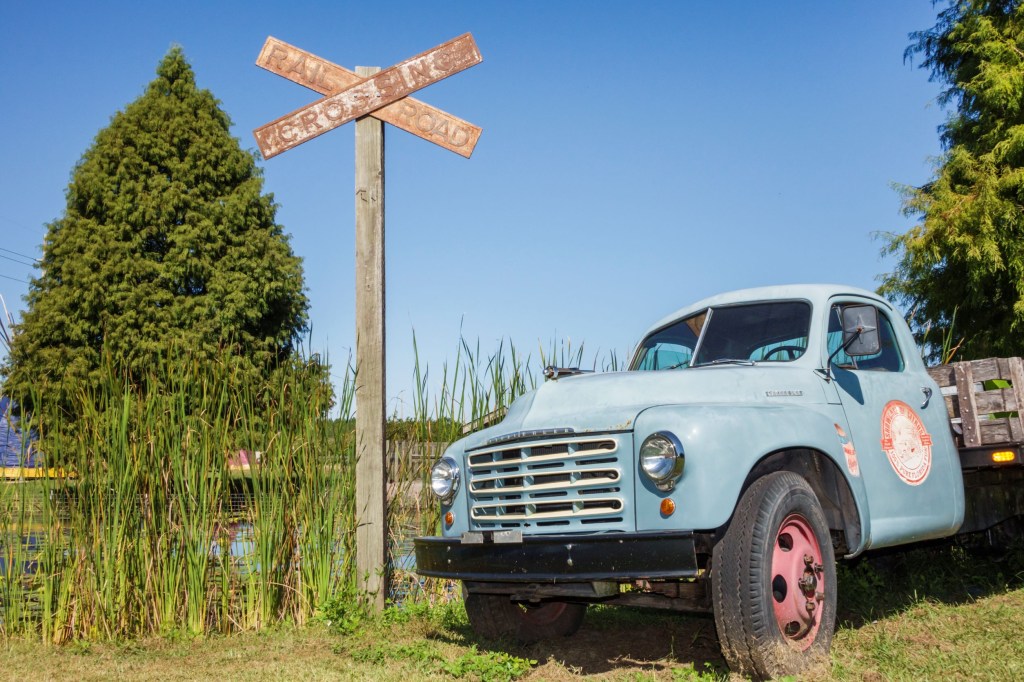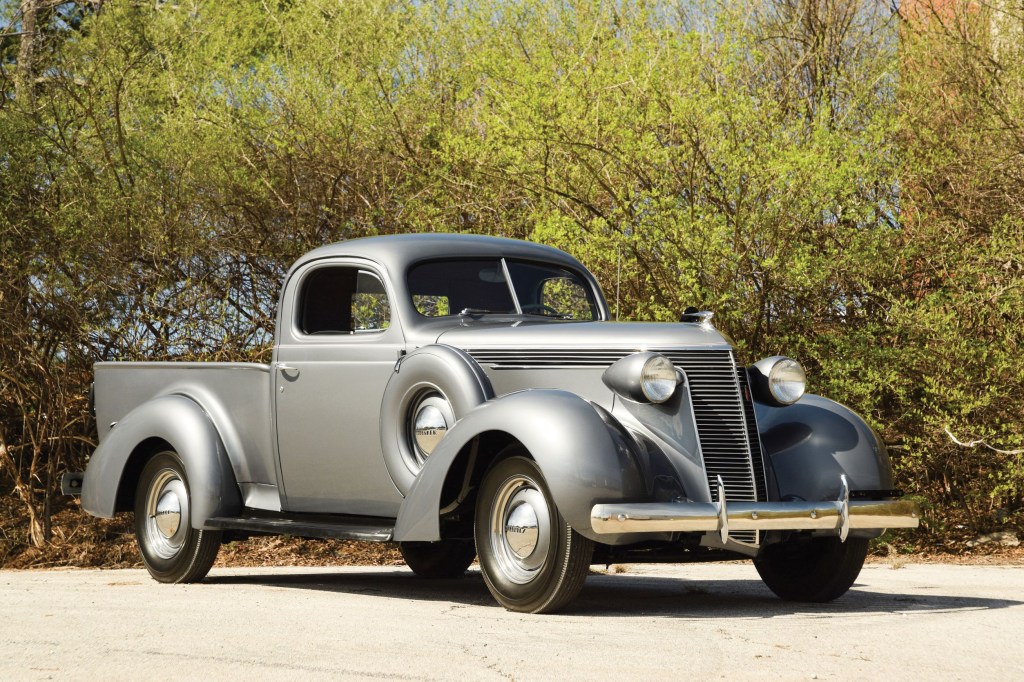
Forgotten Farm Tools: Studebaker Once Made Pickup Trucks
For how popular pickup trucks are, especially vintage ones, some of their early histories are often forgotten. That’s somewhat understandable, given that some of the companies that made these now-classic trucks no longer exist. But while they didn’t have the F-Series’ staying power, these lesser-known trucks are still interesting in their own ways. For example, despite what Ford claims, the Reo Speedwagon was the first real production pickup. And back in the day, Studebaker offered a whole line of pickup trucks.
The Champ came at the tail end of 50 years of Studebaker pickup trucks

Some might be familiar with the 1960-1964 Studebaker Champ, which was built on a version of the Lark sedan’s platform. But while the Champ is arguably one of the company’s better-known pickups, it’s certainly not its first. It’s just the capstone on roughly 50 years of Studebaker pickup trucks.
Studebaker originally started as a wagon-making company in the mid-1800s, MotorTrend reports. Then, like several other wagon- and carriage-making companies, it pivoted to automobiles in the early 1900s. However, at the time there was no such thing as a factory-made pickup truck, Studebaker or otherwise. Instead, if you wanted, say, a Model T pickup, you bought a home conversion kit.
But that changed for Studebaker in 1914 when it launched a commercial vehicle division. Among other things, it started making panel trucks built on car chassis. However, Studebaker’s commercial trucks only lasted until 1917. The company then returned to them in the 1930s when it gained control of luxury American marque Pierce-Arrow. Although Pierce-Arrow mostly made expensive cars, it also had a few pickup truck designs. And shortly after it purchased the luxury brand, Studebaker announced it was getting back into pickup trucks.
Initially, Studebaker followed the convention of the day and offered a range of 1.5-3-ton trucks that it called the S Series. The company replaced these models in 1934 with the T Series and W Series. Both used six-cylinder engines, though the Ws had larger ones. In 1937, the J Series replaced them in turn. And it’s at this point that Studebaker’s pickups truly took off.
Studebaker pickup trucks offered style and hard-working substance

By this point, Studebaker had started offering ‘conventional’ and ‘Cab Forward’ multi-ton trucks. But in 1937, Studebaker introduced its first attempt at a light-duty pickup, the J5 Coupe Express. Pre-dating the Ford Ranchero by several decades, the J5 Coupe Express is basically a Studebaker Dictator sedan with a built-in bed. And its streamlined Art Deco design meant it looked nothing like the other pickup trucks of the time, RM Sotheby’s says.
Unfortunately, the Studebaker J5 Coupe Express was a little too ahead of its time. But the company’s next attempt at a light-duty truck was noticeably more successful. In 1941, Studebaker launched the M Series, which included its first true light-duty truck, the half-ton M5. To save money, the M5 borrowed some of the contemporary Champion sedan’s body panels and its 2.8-liter six-cylinder, Hemmings reports. And Studebaker saved more money by making the M5’s fenders and running boards interchangeable. But it was extremely successful. Studebaker sold over 50,000 M5s before it ended production in 1948.
Although successful, the M5’s Art Deco design was dated by the end of WWII. Its successor, the Studebaker 2R Series, ditched the Deco for a more streamlined appearance. And while the 2Rs used the same 2.8-liter engine and three-speed transmission, the new trucks had some trick features. They were the first production pickups with double-walled beds, Hagerty says, a common modern feature. And in another modern preview, the Studebaker 2R Series trucks don’t have running boards.
The 2R Series morphed into the 3R Series in 1954, which turned into the E Series a year later. That’s also when Studebaker finally gave its light-duty trucks a V8 option. And NAPCO 4WD, previously only available through conversion kits, became a factory option in 1957. However, although that meant Studebaker offered a V8 4×4, and GM didn’t, the smaller company couldn’t keep up with its rivals. Shortly after the Champ folded, so did Studebaker.
These vintage trucks are lesser-known, but that makes them affordable
Like many classic trucks, Studebaker pickups have appreciated. However, they’re still more affordable than their contemporary vintage Chevy and Ford equivalents. A good-to-excellent-condition 2R5 typically costs $20K-$35K, Hagerty reports. Restomodded examples on Bring a Trailer often cost about that much, too.
Given their reputation as lesser-known pickups, replacement parts might seem like a worry for vintage Studebaker truck owners. But that’s not the case, Hemmings muses. NAPA often carries Studebaker parts, Hagerty says. And while the 2R Series couldn’t match F-Series sales, Studebaker still sold over 100,000 examples. They’re rare, but they’re not made out of unobtanium. Plus, their uncomplicated designs make them relatively easy to work on.
Hopefully, this helps some of these forgotten trucks get back to pulling stumps.
Follow more updates from MotorBiscuit on our Facebook page.


